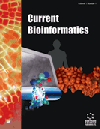Current Bioinformatics - Volume 5, Issue 2, 2010
Volume 5, Issue 2, 2010
-
-
A Tutorial for Microarray Data Analysis with SAS-STAT Software
More LessAuthors: Corrado Dimauro and Nicolo P.P. MacciottaIn recent years, microarrays have become a key experimental tool, enabling the analysis of genome-wide patterns of gene expression. Numerous complex statistical problems arise during the analysis of microarray data and, therefore, only specialized statisticians are able to extract the expressed genes. This tutorial is aimed to help biologists to conduct some, also if rough, analysis of their microarray data immediately afterwards they are produced. After a short review on statistical challenges in microarray studies, complete data analysis, from raw data to differentially expressed genes, was developed using both simulated and real data set. The referring microarray platform was the spotted cDNA microarray and all the computations were developed using the SAS-STAT software.
-
-
-
Development of Genomics-Based Gene Expression Signature Biomarkers in Oncology and Toxicology to Facilitate Drug Discovery and Translational Medicine
More LessBiomarker identification has been a critical component in drug discovery and development. Biomarkers have been utilized in several areas such as disease diagnosis, pharmacokinetics-pharmacodynamics (PK-PD) modeling, evaluation of efficacy and toxicity to guide both pre-clinical compound selection and clinical study of candidate compounds. Recent advances in genomics and bioinformatics have created a new paradigm in the development of robust gene expression signature biomarkers, particularly for predicting toxicity and cancer drug responses. In this article, we present an overview of current progress in this arena including methodology development and applications in the drug discovery process.
-
-
-
Machine Learning for Childhood Acute Lymphoblastic Leukaemia Gene Expression Data Analysis: A Review
More LessAuthors: Amphun Chaiboonchoe, Sandhya Samarasinghe and Don KulasiriAmong childhood cancer, acute lymphoblastic leukaemia (ALL) has been the most extensively studied propelled by the desire to improve survival rate. DNA microarray technology has expanded rapidly providing an extensive source of data that promise to pave the way for better prognosis and diagnosis of cancer and identify key targets for drug development. DNA microarray data analysis has been carried out using statistical analysis as well as machine learning and data mining approaches. In this paper, we present a comprehensive review of machine learning approaches that have been used on ALL microarray data. Followed by the research conducted by biological and medical childhood leukaemia research groups, machine learning has been used to enhance cancer diagnosis and subtype classification, development of novel therapeutic approaches and accurate identification of risk stratification of patients. These methods have been used in four major areas of microarray data analysis: gene selection, clustering, classification and pathway analysis. Each machine learning algorithm has its own advantages and drawbacks. Highlights of these as well as some outstanding future research and challenges are summarized in this paper. This review aims to serve as a starting point for those interested in microarray analysis in general and cancer research in particular.
-
-
-
High Conservation of Amino Acids with Anomalous Protonation Behavior
More LessAuthors: David G.C. Hildebrand, Huyuan Yang, Mary Jo Ondrechen and Ronald J. WilliamsThe determination of a protein's biochemical function from its 3D structure has proved more difficult than anticipated for structural genomics proteins, most of which are of unknown or uncertain function. Functional annotations typically have been assigned using the closest sequence or structure match, a practice that has resulted in large numbers of misannotated proteins. Recently it was reported that computed protonation properties can be used to predict the residues with catalytic and binding activity, thus providing clues about the function of the protein. We show that residues with anomalous computed protonation behavior constitute a small fraction of the protein's highly conserved residues. Results for a test set of 61 proteins reveal that the average conservation scores are high for residues with unusual protonation behavior, even for many not annotated as functionally important in the literature. Two enzymes, protein tyrosine phosphatase from Yersinia enterocolitica and glucosamine-6-phosphate deaminase from Escherichia coli, are described in detail as examples to illustrate the relationship between anomalous protonation behavior and conservation. We conclude that the residues with anomalous protonation behavior are generally highly conserved, but are fewer in number and more spatially localized than the set of all highly conserved residues in a given protein.
-
-
-
Matching up Phosphosites to Kinases: A Survey of Available Predictive Programs
More LessAuthors: Stefano Toppo, Lorenzo A. Pinna and Mauro SalviOver the past few years, research in phosphoproteomic has assisted a tremendous revolution thanks to instrumental technologies advances in mass spectrometry combined with innovative experimental strategies. This has allowed the identification of thousands of high confidence phosphosites. Presently, almost 60000 non-redundant phosphosites have been identified from ∼10000 non-redundant proteins and about 80% of these phosphosites have been identified from high throughput experiments in the last six years. The vast majority of phosphosites are still functionally uncharacterized and the kinases responsible of their generation are almost unknown. Several computational approaches have been developed to link kinase families with putative substrates and although these are powerful tools, they are not commonly used. Here we discuss about the present approaches and tools developed for predicting the functional link between the kinases and their substrates.
-
Volumes & issues
-
Volume 20 (2025)
-
Volume 19 (2024)
-
Volume 18 (2023)
-
Volume 17 (2022)
-
Volume 16 (2021)
-
Volume 15 (2020)
-
Volume 14 (2019)
-
Volume 13 (2018)
-
Volume 12 (2017)
-
Volume 11 (2016)
-
Volume 10 (2015)
-
Volume 9 (2014)
-
Volume 8 (2013)
-
Volume 7 (2012)
-
Volume 6 (2011)
-
Volume 5 (2010)
-
Volume 4 (2009)
-
Volume 3 (2008)
-
Volume 2 (2007)
-
Volume 1 (2006)
Most Read This Month


